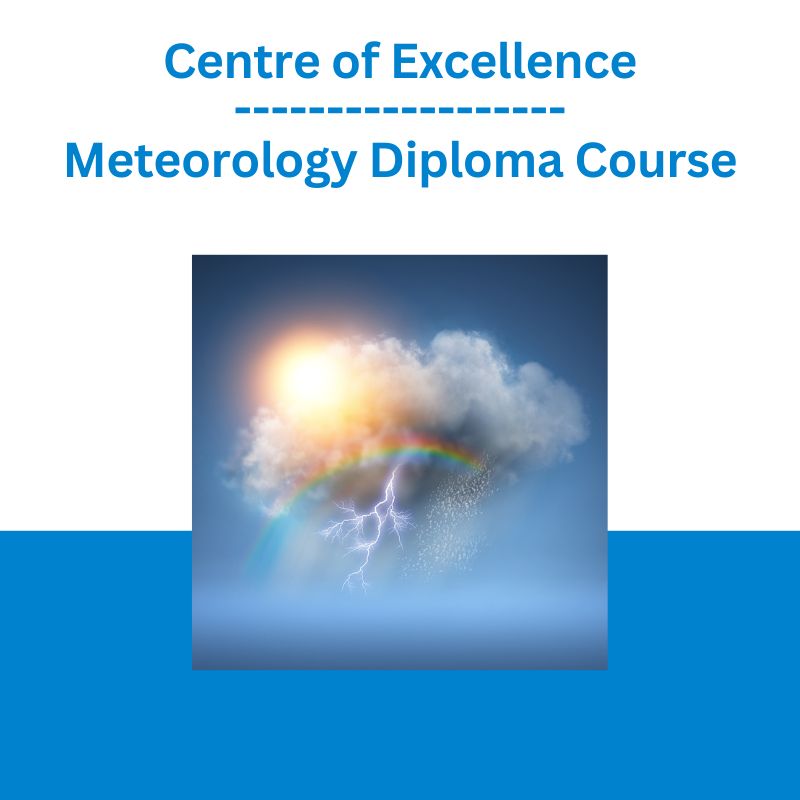*** Proof of Product ***
Exploring the Essential Features of “Centre of Excellence – Meteorology Diploma Course”
What Will You Learn?
Meteorology is the study of short-term weather conditions of all types – from the everyday to the extreme. It is used to examine atmospheric processes and other key components in order to explain and forecast weather. Take the Meteorology Diploma Course and learn more about this fascinating branch of atmospheric science.
Starting off with an introduction to the field, including the subfields of meteorology and the essential components of weather, you’ll learn about the Earth’s layers, the atmospheric processes that contribute to the development of different weather systems, and the global atmospheric circulation.
We’ll look at how meteorologists gather weather data and the mathematical models they use for weather forecasting. We’ll examine the main types of clouds and what they can tell us about the weather, delve into the jet streams and ocean currents and the impact they have on the weather, and look through the different scales of meteorology.
Through the course, you’ll learn about precipitation and extreme weather, such as blizzards, monsoons, thunderstorms, tropical cyclones, tornadoes, and waterspouts, and what causes them. You’ll also be introduced to some of the most important concepts in space weather and some of the ways in which it affects our weather on Earth.
By studying this course, you will:
- Learn about the components of weather
- Explore atmospheric processes and global atmospheric circulation
- Understand how meteorologists gather weather data and the mathematical models used in weather forecasting
- Discover the impact that jet streams and ocean currents have on the weather
- Gain an understanding of what causes various extreme weather conditions
- Learn about important concepts in space weather and how it affects Earth
Module 1: Introduction to Meteorology
Introduction
Part 1: The Development of Meteorology
Part 2: Subfields of Meteorology
Part 3: Key Components of Weather
Module 2: The Atmosphere
Part 1: The Layers of Earth’s Atmosphere
Part 2: The Atmosphere and Weather
Part 3: Atmospheric Circulation
Module 3: Forecasting Methods
Part 1: Data Collection
Part 2: Forecasting
Module 4: Clouds
Part 1: How Clouds Form and Cirrus Clouds
Part 2: Stratus Clouds
Part 3: Cumulus Clouds
Part 4: Clouds of Vertical Development
Part 5: Rare Clouds
Module 5: Jet Streams and Scales of Meteorology
Part 1: Jet Streams
Part 2: Microscale Meteorology
Part 3: Mesoscale Meteorology
Part 4: Synoptic and Global Scale Meteorology
Module 6: Precipitation, Blizzards and Monsoons
Part 1: Types of Precipitation
Part 2: Causes of Precipitation
Part 3: Blizzards
Part 4: Monsoons
Module 7: Thunderstorms and Tropical Cyclones
Part 1: Thunderstorms
Part 2: Tropical Cyclones
Part 3: Hurricanes and Typhoons
Module 8: Tornadoes and Waterspouts
Part 1: Tornadoes
Part 2: Waterspouts
Module 9: Ocean Currents
Part 1: Ocean Currents
Part 2: ENSO
Part 3: Examples of Ocean Currents
Module 10: Space Weather
Part 1: Fundamental Concepts
Part 2: Solar Cycles
Part 3: Meteorological Effects
Who Would Benefit from This Course?
The Meteorology Diploma Course will be of interest to you if you enjoy learning how the world works and the factors that make it the way it is – in particular how various weather conditions are formed and how meteorologists are able to forecast it.
Please see the full list of alternative group-buy courses available here: https://lunacourse.com/shop/









